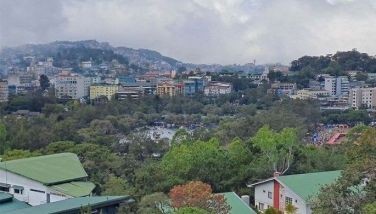For regulars of the LRT-2's eastward stations, each day is harder than the last
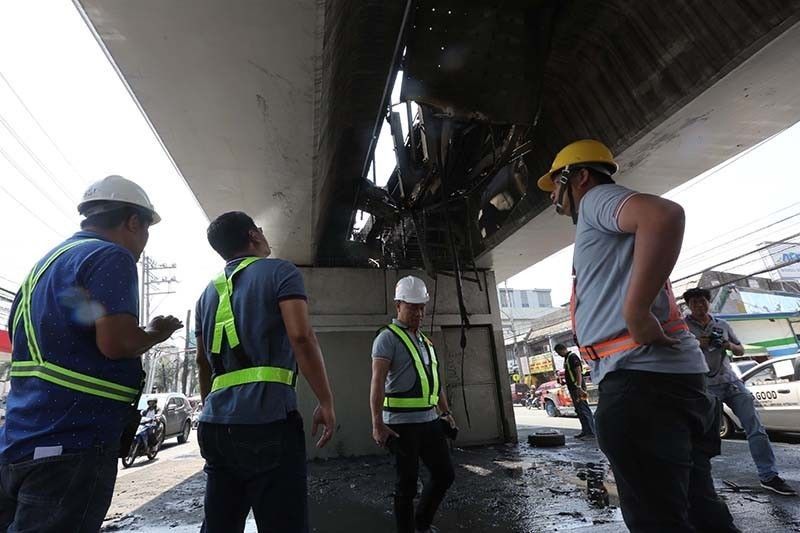
MANILA, Philippines — On the afternoon of Oct. 3, 2019, the first Thursday of the month, a rectifier-transformer of the only train line that runs east to west caught fire, prompting authorities to halt their operations for the day. Operations later continued, but only partially and without three stations: Anonas, Katipunan and Santolan.
As early as then, groups predicted that the temporary shutdown was slated to create a “big shift” in the daily routines of thousands of passengers. “It will have a huge impact to the point that if you’re gonna look at the road-based systems plying the same route, there are only jeepneys,” Julius Dalay, chair of the advocacy group Commuters of the Philippines said in an earlier phone interview with Philstar.com.
READ: Anonas, Katipunan and Santolan LRT-2 stations to be repaired by end of June 2020
Sure enough, things haven't quite been the same since, and for the former regulars of three Light Rail Transit-2 (LRT-2) stations that have been offline, few things have been more trying than the past few months without them.
To be exact, that’s approximately a collective 116,000 passengers per day who would get on board or alight the LRT-2 trains at the three stations, meaning that more than half of the line’s estimated 200,000 daily passengers were affected, according to data cited by commuter advocacy group AltMobility PH in an interview with Philstar.com.
“Almost five months nang hindi operational ang LRT-2 mula Santolan hanggang Anonas,” commuter Jerome Adonis told Philstar.com in a text message.
(It has been almost five months of the LRT-2 from Santolan to Anonas not being operational.)
“Bilang commuter, lalo kaming nahirapan sa pagsakay. Dagdag ang pamasahe at humaba ang oras ng byahe mula ng masira.”
(As a commuter, finding a ride only became more difficult. Fare costs only went up and the commutes only got longer since the fire.)
Jerome is secretary-general of Kilusang Mayo Uno (KMU), one of a myriad of labor and transport groups who tagged the commuter’s situation as a mass transportation crisis after the three LRT-2 stations were left offline for repairs.
READ: Mass transport in Philippines is in crisis — BAYAN
Transportation in crisis
Within that same week, the LRT-1 and MRT-3, too, experienced mechanical hiccups of their own.
In response, the Palace denied that such a crisis even existed, saying people could still get to their destinations anyway, as long as they woke up earlier.
READ: Panelo: What transportation crisis?
But while those train lines remained online after their subsequent recovery, the riders of the LRT-2—which runs along five cities in Metro Manila—faced the worst of it in a situation that illustrates what ails the capital's three mass-transit systems today: underreported, out of commission, with backup services unprovided for.
Commuters wait in long lines as the LRT-2 implements partial operations from Cubao to Recto and Recto to Cubao stations on Tuesday morning. | via Michael Varcas pic.twitter.com/zHHkctdeTf
— The Philippine Star (@PhilippineStar) October 7, 2019
The train line is the only one that serves Marcos Highway and Aurora Boulevard, two of Quezon City's major thoroughfares.
And although operations at the Anonas, Katipunan and Santolan stations of the LRT-2 line were confirmed by the Transportation Department to be slated for return by the end of June 2020, the five months without the line's final three eastward stations have taken a toll on commuters.
While thousands were left stranded that day in October, many more are stranded in long waits every night. Since the fire, the eastward jeep and UV express terminals at Araneta Center, where the LRT-2 Cubao Station is, have been tightly congested on a nightly basis as the former regulars of the three stations were forced to rely on these jeeps to head east.
Although eight of the line’s stations remain functional as part of what they call “partial operations” for the time being, more than half of the line’s ridership—mostly students—are affected by the loss of the three eastward stations.
“Sa LRT-2, it’s mainly a student market. Dito connected sa Katipunan tapos yung University Belt, connected din siya. Maraming schools along that area. So malaking impact yung LRT-2 ridership is more on students than any other sector,” AltMobility PH Chief Mobility Officer, Jedd Ugay, told Philstar.com in a phone call.
(On the LRT-2, it's mainly a student market. It's connected to Katipunan and to the University Belt. There are many schools in that area, so the brunt of the impact on the LRT-2 ridership has been on students than on any other sector.)
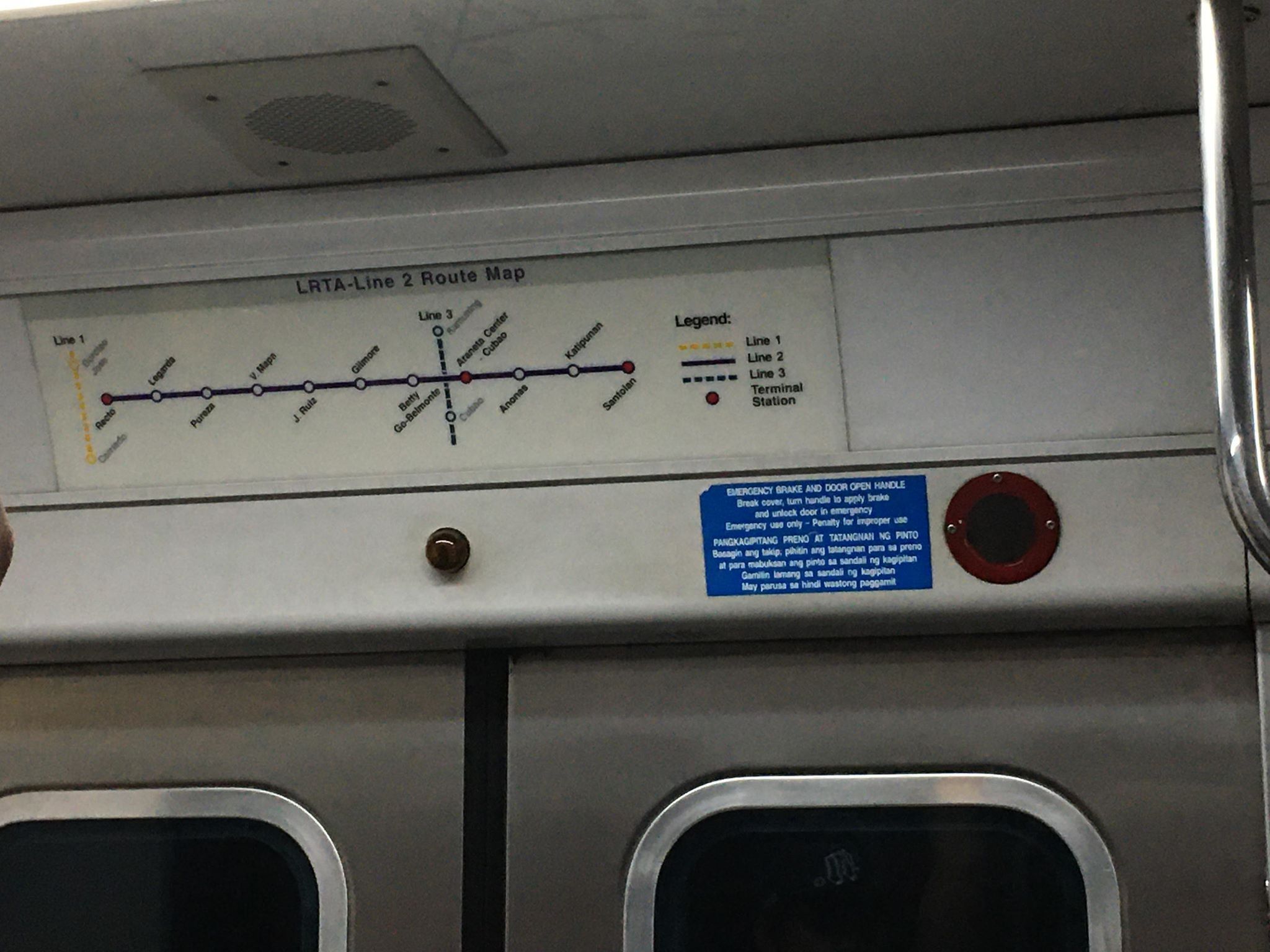
"Ngayon, hirap na hirap yung mga commuters na apektado (Now the commuters who are affected are suffering,)" Ugay added, pointing out that things are seen to remain that way until June.
Dalay also pointed out that this was a direct result of the train line's mismanagement.
“Basically, what happened in Katipunan is roughly corruption and poor maintenance. Systems like these are supposed to be running like clockwork, in which a fire should not happen because it should have proper maintenance,” Dalay said.
Long delays, longer commutes
After the fire, the Metropolitan Manila Development Authority deployed four buses to ferry passengers down the LRT-2 line from Santolan to Cubao, the LRTA said.
But for commuters who usually boarded or alighted at these three stations, alternatives to and from Cubao station—now the line's eastern terminus—have become scarce as social media is often rife with unanswered complaints on the long waits along Katipunan and Cubao. Some users say these can take hours.
"Kailangan bumaba ng Cubao, tapos sumakay ka ng jeep. Maraming prinovide na buses, pero hindi siya sapat in terms of, hindi mo kasi narereach yung service level mo dati," Ugay said.
"Meaning, yung travel time ng buses compared to the train, malayong malayo. Kahit maraming bus, kukulangin pa rin siya kasi di siya makabalik agad. Yung roundtrips niya, kulang."
(You have to get off at Cubao, then take a jeep. They provided a lot of buses but it isn't enough to reach the service level before. Meaning, the trips on the buses take much longer. There may be a lot of buses but there still are not enough because they take longer to come back. There are not enough round trips.)
Commuters headed east crowd the Araneta City jeepney depot in Quezon City on Tuesday night. (Video courtesy of Miguel de Guzman/The Philippine STAR) pic.twitter.com/HQlpHLct5H
— The Philippine Star (@PhilippineStar) October 8, 2019
And as private companies quietly pulled out their service along the road, the lines and commutes grew longer.
READ: Angkas magbibigay ng libreng sakay kasabay ng LRT-2 partial operations
"Yung mas important for us than the restoration of the breakdown is dapat kapag may breakdown na nangyayari, meron dapat tayong measures or protocol in providing transportation demand management kapag may disruption," Ugay said.
(What's more important for us than the restoration of the breakdown is that whenever a breakdown happens, there should be measures or protocols in providing transportation demand management in the event of a disruption.)
Our prayers are with your son, Sir Mike ????
— The Philippine Star (@PhilippineStar) October 8, 2019
LOOK: Amid the struggle of commuters due to the recent LRT-2 incident, a netizen shared a heartwarming story of a motorcycle driver who offers free rides to Cubao station. (Photos courtesy of Modrea Eulanne Reyes) pic.twitter.com/Yqhc8RVUAw
"Dapat kontrolin is provision ng interim services na hindi ngayon sufficiently naproprovide. Eh ito dapat was supposed to be something na controllable or under the power of our government. Yung sa first two months, medyo nag effort, pero parang nag die down yung effort to provide interim transport services."
(What should be controlled is the provision of interim services that aren't being sufficiently provided today. But this was supposed to be something that was controllable under the power of our government. In the first two months, they did put a little effort into it, but it looks like this died down.)
"According doon sa information na nakuha namin, ang kailangan daw ideally is around 400 buses per hour to augment commuter demand according to DOTr. Pero yung naprovide palang yata is 200 or less, according to data from December."
(According to the information we got, what is needed ideally is around 400 buses per hour to augment commuter demand according to DOTr. But what was provided so far is 200 or less, according to data from December.)
No clear answers
According to Ugay, commuters held issue primarily with two main points: the lack of updates, and the lack of backup services.
"Hindi masyado updated yung public stakeholders, especially yung commuters, regarding doon sa restoration process. Naghahanap ako ng information about yung details like nasaan stage na tayo ng procurement or restoration. Medyo vague yung sagot lagi," he said.
(The public stakeholders are not informed on the restoration process for the trains. I keep looking for inormation, for details on what stage it already is, in procurement or restoration of the trains. The answers I get are always vague.)
READ: LRTA Statement for Resumption of Partial Operation of the LRT-2 System pic.twitter.com/uqsOEJw4eY
— LRT2 (@OfficialLRTA) October 7, 2019
Almost immediately after the initial fire was put out, the LRTA said restoring full operations could take at least nine months.
Days later, they said commuters would be back in the stations within two to three months.
READ: ‘LRT-2 fully operational in 2 to 3 months’
But that much time later, December and January 2020 came and went without a word from the LRTA, despite multiple requests for comment from Philstar.com, who last reached out on February 9. While the LRTA management "acknowledged" inquiries, no answers were provided.
"Pabaya, perwisyo, at walang malasakit sa mga commuters," Adonis said.
According to the most recent update from DOTr, the working time table was scaled back to eight months, as the update was mentioned in passing and at the bottom of an earlier press statement.
Most recently, tweets surfaced on social media reporting that the entire LRT-2 line was reportedly down on Sunday, February 9, as stations including Recto and Pureza were reported to be closed. No statement came from either the Department of Transportation (DOTr) and the Light Rail Transit Authority (LRTA) that day.
In a phone call, an operator informed Philstar.com that nobody was present at the LRTA's office. And in a succeeding text message exchange, a representative from the Transportation Department directed Philstar.com to instead contact the LRTA for any queries related to the LRT-2.
It was only on the Monday after that confirmation was issued. "Yes, yesterday, Feb.9, 2020, the LRT-line 2 system encountered another technical problem," the official LRTA Facebook page told Philstar.com in an online exchange.
"Sana lang mas maging transparent doon sa process, para kung may delay man sa timeline, maiintindihan natin rather than babalik sa ganito pero hindi proprovide ng details," Ugay said.
"Kulang ng information update sa stakeholders. Kapag timeline lang yung sinasabi, hindi mo talaga siyang maappreciate as a commuter."
Moving forward
AltMobility cited a briefer from the US Transportation Department's Office of Operations that says, "When an area relies heavily on transit services as a key option for transporting people to and from their destinations, loss of transit can put enormous pressure on the roadways as travelers choose to use a single-occupancy vehicle (SOV) as an alternative."
- Offering a substitute mass transit mode that services roughly the same area.
- Implementing temporary high-occupancy vehicle (HOV) requirements.
- Implementing temporary bus priority lanes.
- Expanding bicycle and pedestrian infrastructure.
- Considering creative partnerships with shared mobility providers to address first- and last-mile impacts.
"Traffic managers recognize that transit disruptions lead to not only an increase of vehicles on the roadways, but possibly an increase of bicycles and pedestrians too," the briefer says.
"Providing the safe infrastructure to accommodate everyone and making sure travelers know about those alternatives are important."
RELATED: Temporary LRT-2 shutdown after fire highlights need for structural change, better inspections
University of the Philippines Urban Studies Professor Jed Gomez echoed this sentiment, telling Philstar.com in an earlier interview that even just having similar briefers would make all the difference.
"You can also provide people more information for alternate modes. You have to make it convenient for them to find alternate modes. There’s nobody who does that on a per hour basis. You don’t have a concierge or whatever," Gomez said.
"If you maximize those alternate sources of information and then you help people find that information and you make sure it’s always reliable or trustworthy and [safe] then you can alleviate the situation with the train system."
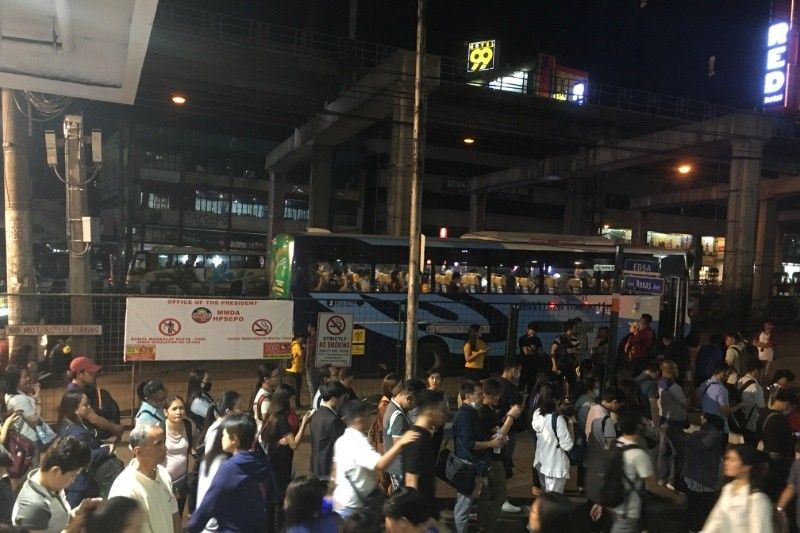
Meanwhile, another briefer cited by AltMobility outlined a travel guide in the case of train disruptions in Singapore encouraged riders to take:
- Bus bridging services
- Other unaffected train lines
- Taxi and private hire car services
- Fare refunds
- Public bus services
"Information and human touch. The whole courtesy of having somebody to show you around. So many basic things. But the focus on public service really still has to be insisted upon. It’s going to take some time. I don’t know when that will happen," Gomez added.
According to Ugay, an existing protocol "menu" in Singapore that the Philippine government could look into consists of:
- Offer a substitute mode that services the same area
- Implement temporary high occupancies vehicles requirements
- Implement a temporary bus priority lane
- Expand bicycle and pedestrian infrastructure
- Create partnership with immobility providers
The mobility officer pointed out that these are things that are possible here, despite certain limitations.
"I believe lahat nong nasa menu nila is applicable sa'tin it's just a matter of trying it out," he said.
"Yung nagagawa pa lang natin ngayon is creative partnership and mobility providers, [so puwede pang] dagdag ng additional services doon sa corridor na yun. Kailangan talaga ng additional issuance ng temporary franchises na manggaling mismo sa government. Compelling operators to serve this area."
Dalay also said earlier that the incident indicated the dire need for better management structure.
“Trains are supposed to last for 30 to 40 years, even extending to 50 years but line 2 is just 15 [or] 16 years. Trains undergo major rehabilitation and upgrade after 10 to 15 years during service to increase reliability and to make it better to meet the lack of spare parts,” he said.
‘It will get worse before it gets better’
Until then, the waiting game continues for commuters heading down Aurora Boulevard.
"Average waiting time nila from mga ten to fifteen minutes before, 'pag sa LRT 2 kasi mga ganun ang average waiting time nila … ngayon it can take you thirty to 45 minutes para maka-kuha ng masasakyan," Ugay said of the nightly delay.
Commuters line up in Cubao station as the LRT-2 implements partial operations from Cubao to Recto and vice versa on Tuesday morning. pic.twitter.com/0bttn3NyO6
— The Philippine Star (@PhilippineStar) October 8, 2019
"[I]f you have 40 years of economic life with the five to six hours a day [of commuting,] you would have wasted 28,000 to 40,000 hours, that's at least nine to fifteen years taken from your life," urban planning specialist Felino "Jun" Palafox said on ANC's "Early Edition" in October.
To put this number into perspective, data from the World Health Organization published in 2018 said that the total life expectancy in the Philippines for both men and women is 69.3 years.
As it is, the Boston Consulting Group revealed in 2017 that Manila's traffic congestion cost motorists an average of over an hour lost in traffic every day, putting it at third worst in Southeast Asia.
READ: Filipinos lose 9 to 15 years of their lives sitting in traffic — urban planner
Public Transport and Mobility Advocate Robert Siy told Philstar.com in an earlier interview that tackling the root of the mass transportation crisis "means prioritizing public transport so that they move faster. When public transport moves faster that means that they can carry more people."
"If people feel that I can move faster using public transport, then more people will leave their cars at home. That’s the attitude you want people to have: that 'If I used public transport, I would be home already much earlier'," Siy said.
Roderick Planta, NEDA assistant secretary for Infrastructure Development, speaking at the Future Cities Forum 2019 organized by the European Chamber of Commerce of the Philippines, said the scale of the "Build, Build, Build" program—the Duterte administration's plan for a "golden age of infrastructure"—is a challenge.
READ: Solutions to Metro Manila traffic 'coming along,' NEDA exec says
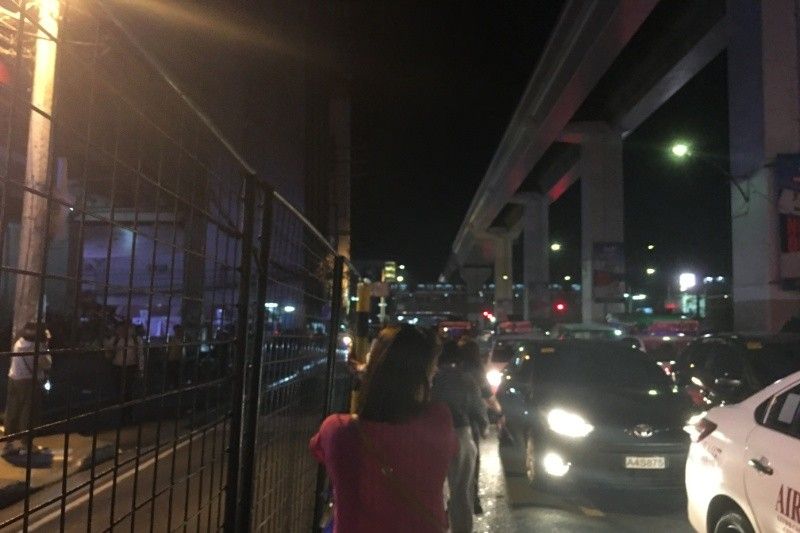
Asked by Philstar.com what Manila's commuters have to look forward to in the short term, Planta explained that "a bit of the challenge is how we are positioned to deliver, and the challenge of the bigger budget [and] coordinating our infra team."
"If you want to move it faster, you'd have to [take on] additional costs," he added.
"So kumbaga, it will get worse before it gets better, yun talaga. This is where we are, and the solutions are just coming along." — with reports from Gaea Katreena Cabico
- Latest
- Trending





























